Kodak KODACOLOR 100 & 200 review with photos: is this really new film?
Kodak KODACOLOR 100 & 200 review with sample images shot on release day. Full technical specs, grain analysis, metering tips, and some nice photos.
Today Kodak released KODACOLOR 100 and 200 without announcement. Many photographers suspect these are repackaged existing film stocks. Without official datasheets, we can’t confirm, but what we can do is shoot them and see how they perform.
Image Details: Each photo shows which film stock was used (Kodacolor 100 or 200) in the caption below each frame.
What does Kodak say? (from their website)
KODACOLOR 100
KODACOLOR 100 is a low-speed daylight balanced color negative film. It has fine grain, saturated colors, high sharpness, wide exposure latitude, and consistent color reproduction making it suitable for general picture taking situations. This 100 speed film does well in brightly lit scenes while still providing good shadow detail.
KODACOLOR 200
KODACOLOR 200 is a medium-speed daylight balanced color negative film. It has fine grain, saturated colors, high sharpness, wide exposure latitude, and consistent color reproduction making it suitable for general picture taking situations.
But, is it really fine grain? Does it really have a wide exposure latitude, how about the consistent color reproduction? That’s what’s you are about to discover…
I grabbed both rolls this morning, shot street photography in Chinatown NYC under bright sun (as suggested), developed them at home, and scanned the results. This review focuses on what the films actually deliver in real-world conditions, tested on release day.
Contact sheet for KODACOLOR 100
Contact sheet for KODACOLOR 200
Want to see the contact sheets in high resolution? Join the chat! I am not attaching them in high-res in the post because this gets sent by email to people, and I want to be frugal with my subscribers’ inbox storage.
What are these films?
The Eastman Kodak branding signals that Kodak has regained some distribution rights from Kodak Alaris. Whether this launch introduces new chemistry or repackages existing emulsions remains unclear, Kodak hasn’t provided ANY sort of technical details.
The photography community leans toward Pro Image 100 and ColorPlus 200 based on early observations. We’ll need official datasheets to know for certain.
This review focuses on how they turn out in the real world: I am going to focus on how the film handles bright light, what colors look like, how it scans, what the grain structure shows. The comparison question stays open until Kodak provides technical data, so I am not comparing it too much with Gold 200 or Pro Image 100.
Development Observations
I developed both Kodacolor 100 and 200 at home using the AGO Film Processor and CineStill C-41 chemistry. Two things stood out immediately:
Emulsion thickness is similar to Gold Portra, and Ektar. We are potentially not talking about a new emulsion structure. It’s not as thick as CineStill films, for example.
Pre-soak water came out green, not yellow. This suggests different dye layers or anti-halation backing compared to standard consumer Kodak films.
The development process itself went smoothly. Standard times, standard chemistry, normal results.
Color & Tone
Kodak promises “saturated colors” and “consistent color reproduction” for both KODACOLOR 100 and 200. Testing KODACOLOR 100 confirms this.
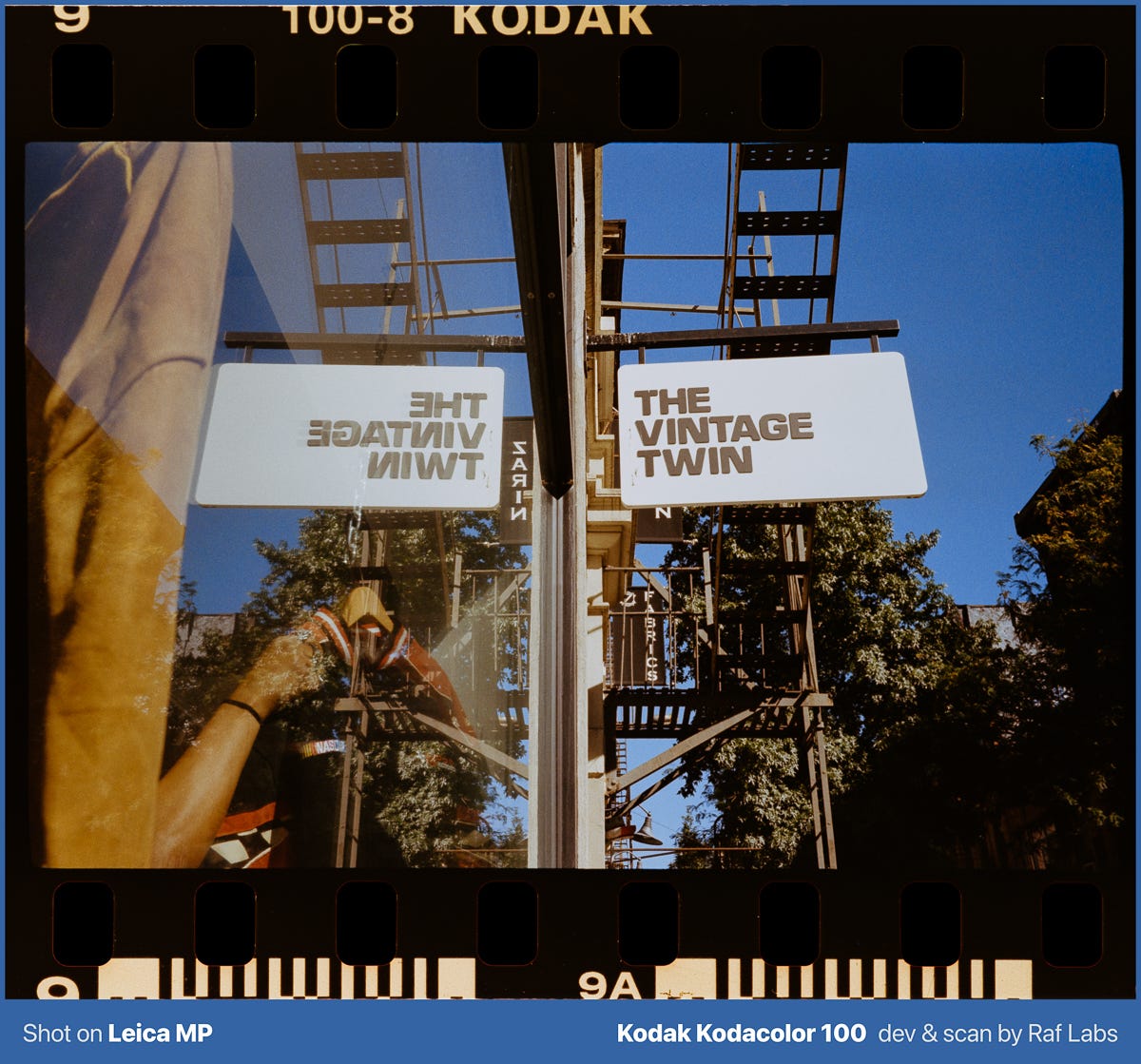
Saturation sits between ColorPlus and Ektar. Full colors without looking artificial. Skin tones came out natural across multiple subjects and lighting situations. Kodak’s claim of “consistent color reproduction” holds true across varied lighting.
Grain Structure
Kodak claims “fine grain” and “high sharpness” for both films. Testing Kodacolor 100 confirms both statements.
Visible grain at 100% magnification but fine enough to qualify as “fine grain.” Finer than Gold 200 but coarser than Ektar 100. Matches Pro Image 100’s grain pattern, which shows more texture than typical ISO 100 films.
Exposure Latitude
Kodak promises “wide exposure latitude” and “good shadow detail”. Real-world testing shows nice results.
Tested in bright sun with high contrast scenes. Shadow detail holds well and colors render beautifully. Two stops into shadow still showed printable information with good color.
Highlights need attention though. The film blows out more easily than expected. When shooting, I metered for 18% gray (middle tones) rather than highlights to preserve detail. This approach worked better than trusting the latitude in bright conditions, I had to do some highlight recovery in Negative Lab Pro.
How do they handle bright light
Kodak designed these films for “brightly lit scenes.” Testing Kodacolor 100 confirms this strength.
Shot street photography in Chinatown under full midday sun. The film performs exactly as intended, with some extra attention needed for highlights.
Shadow compression stays minimal. I am curious to see how it performs with studio and flash, especially for product photography with the Kodacolor 100.
High-contrast scenes with sun and shade work well. The wide exposure latitude Kodak promises shows up in practice.
How do they handle low light
Testing schedules don’t account for hunger. A ramen stop gave me unexpected dim-light frames to evaluate Kodacolor 200’s performance indoors.
It performed well. I would say that the strength of this film stock is on the shadows. It has good shadows recovery.
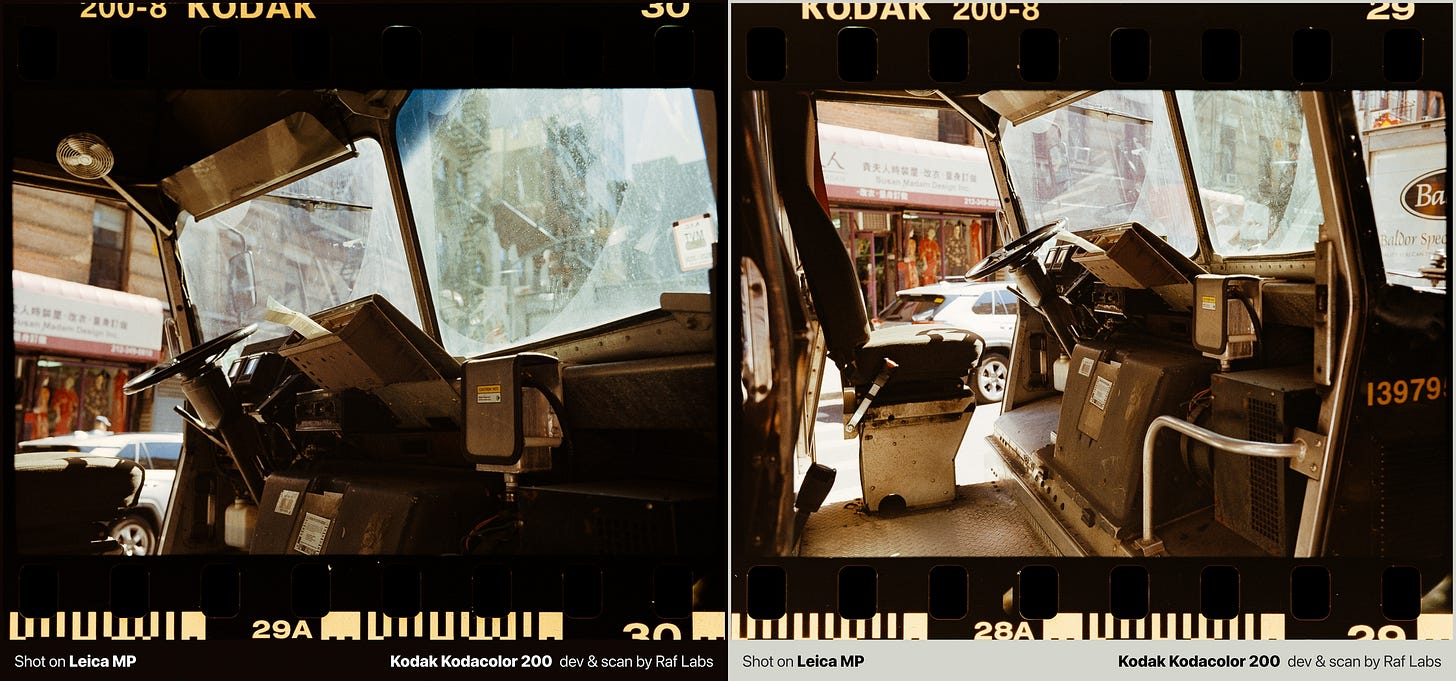
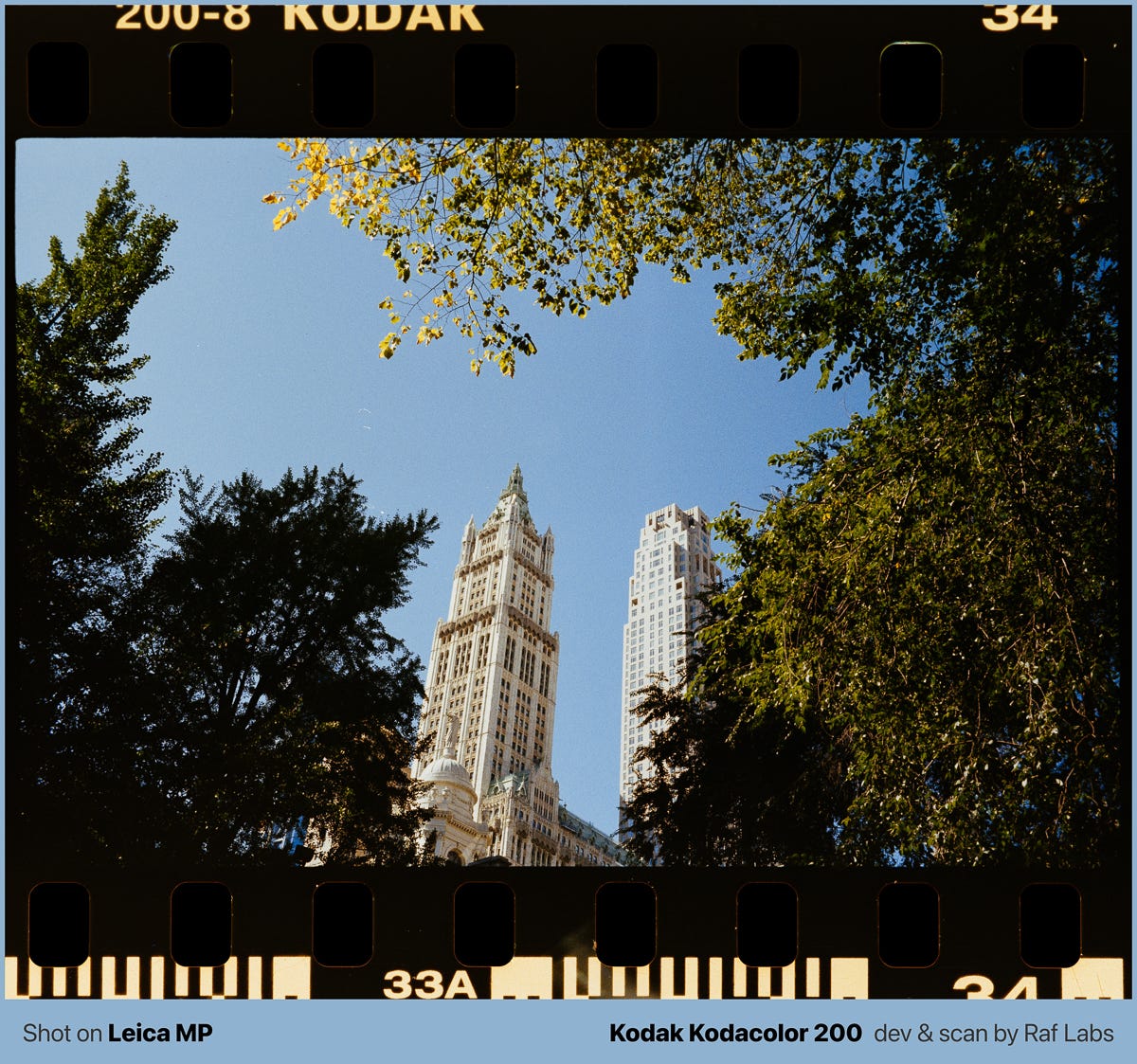
Development observations and results
Home developed using fresh CineStill C-41 chemistry. Some observations stood out:
Film lettering: Kodacolor 100 shows “KODAK 100-8” printed along the film edge. Kodacolor 200 shows “KODAK 200-8”. These markings can help identify the film’s manufacturing origin and potential relationship to other Kodak stocks.
In the first frames, there’s the “KODAK FILM” lettering, the remaining of the shots just show variations of “100-8 KODAK” and “KODAK 100-8” (same for the 200).
I scanned on Fujifilm GFX100S and converted using Negative Lab Pro. Used the “Kodak Gold” preset with minimal adjustments, by creating a new preset which I called “Kodacolor100Default), using Kodak Gold NLP’s built-in preset as starting point.
Highlights blew out more easily than expected. Metering for middle gray (~18%) in-camera proved important (usually the sidewalk concrete), but I would slightly underexpose based on that gray tone. I had to go on NLP and remove some highlight intensity. I recommend metering for highlights, these film stocks has good shadow recovery.
These are the Negative Lab Pro settings I utilized. From there, I performed minimal modifications to adjust exposure. Notice the -6 on the WhiteClip…
Notes
Here is what I observed during development and shooting of both Kodacolor 100 and 200:
Grain structure similar to other ISO 100 consumer films
Neutral color palette with a little bit warm bias, like Gold 200, but not so much
Highlights blow more easily than expected, good shadow preservation
Comparing edge markings with Pro Image 100, Gold 200, ColorPlus 200, and other Kodak films could reveal whether these share base stock with existing emulsions. That’s detective work for future testing, and I’m sure someone on the internet will come up with a datasheet in record time.
Best Uses
Perfect for:
Street photography in bright light (meter for middle tones)
Travel and documentary work
Portraits in good light
Landscape photography with careful metering
General everyday shooting
Skip these film stocks for:
High-contrast backlit scenes (highlights blow easily)
Low light or dim conditions
Situations requiring maximum highlight latitude
Value Analysis
At $9 per roll plus home development costs (or $15-20 lab processing), total investment runs reasonable for the quality delivered.
The quality gap between this and Portra/Ektar is smaller than the price difference. You sacrifice grain smoothness and shadow detail. You keep accurate color, good latitude, and reliable performance.
More street photography samples
All images shot in Chinatown under bright midday sun, check each photo label to know what film stock I used.
The Verdict
Kodacolor 100 and 200 deliver what Kodak promises: fine grain, good sharpness, and neutral colors. At $9 per roll, they perform well for everyday shooting in bright conditions with one caveat: highlights need careful metering.
Shadow detail holds strong. Colors stay accurate. Grain structure looks good. But the highlights blow out more easily than typical consumer films. Meter for middle gray (18%) rather than highlights.
Do they match existing Kodak films? Probably. Which ones? We’ll know when datasheets arrive. For now, the films work as advertised with proper exposure technique.
FAQ
I imagine you have some questions, please send them through the comments or subscriber’s chat, but here’s some answers I can think about.
Are KODACOLOR 100 and 200 new films? Unclear. Kodak hasn’t stated whether these are new emulsions or rebranded existing films. The Eastman Kodak branding suggests redistribution changes rather than new chemistry, but nothing is confirmed.
Which films are these actually? Kodak won’t say. Community speculation points toward Pro Image 100 and ColorPlus 200. Without official datasheets, we can’t confirm. This review focuses on performance rather than definitive identification.
Can I shoot KODACOLOR 100 in low light? No. Kodak describes this as suitable for “brightly lit scenes.” It needs sun. Colors wash out in dim conditions. KODACOLOR 200 offers one stop more flexibility but still prefers good light.
How does it perform in bright light? Good overall. Highlights blow out more easily than expected, so meter for middle gray (18%) rather than highlights. Shadow detail holds well. Colors stay accurate.
What metering strategy works best? Meter for middle tones (18% gray). Avoid metering for highlights or bright areas. The films handle shadows better than bright spots.
How did you scan it? Fujifilm GFX100S with Negative Lab Pro. Used the “Kodak Gold” preset with minimal adjustments (LAB - Standard profile, all sliders at zero). See screenshot for exact settings.
What about the green water during development? Pre-soak water came out green from the anti-halation backing and sensitizing dyes. This is normal for C-41 films. Both KODACOLOR 100 and 200 showed this characteristic.
What are the film edge markings? KODACOLOR 100 shows “KODAK 100-8” printed along the film edge. KODACOLOR 200 shows “KODAK 200-8”. These markings can help identify the films’ origin and relationship to other Kodak stocks. Comparing these with Pro Image 100, ColorPlus 200, or Gold 200 edge codes could reveal if they share base stock.
When will we know which films these really are? When Kodak releases detailed datasheets showing spectral sensitivity curves and dye characteristics. Until then, speculation continues.
Are they worth buying? For $9 per roll, yes if you shoot in bright conditions. The films deliver what they promise. Whether they’re repackaged or not doesn’t change how they perform.
Shot on: Leica MP
Shot location: Chinatown, full sun
Developed: Home developed, CineStill C-41 chemistry (fresh)
Scanned: Fujifilm GFX100S
Conversion: Negative Lab Pro
Date: October 1st, 2025
Camera Clara delivers first-look film reviews on release day. Subscribe for instant analog photography testing and development insights.
For Portuguese version, check:



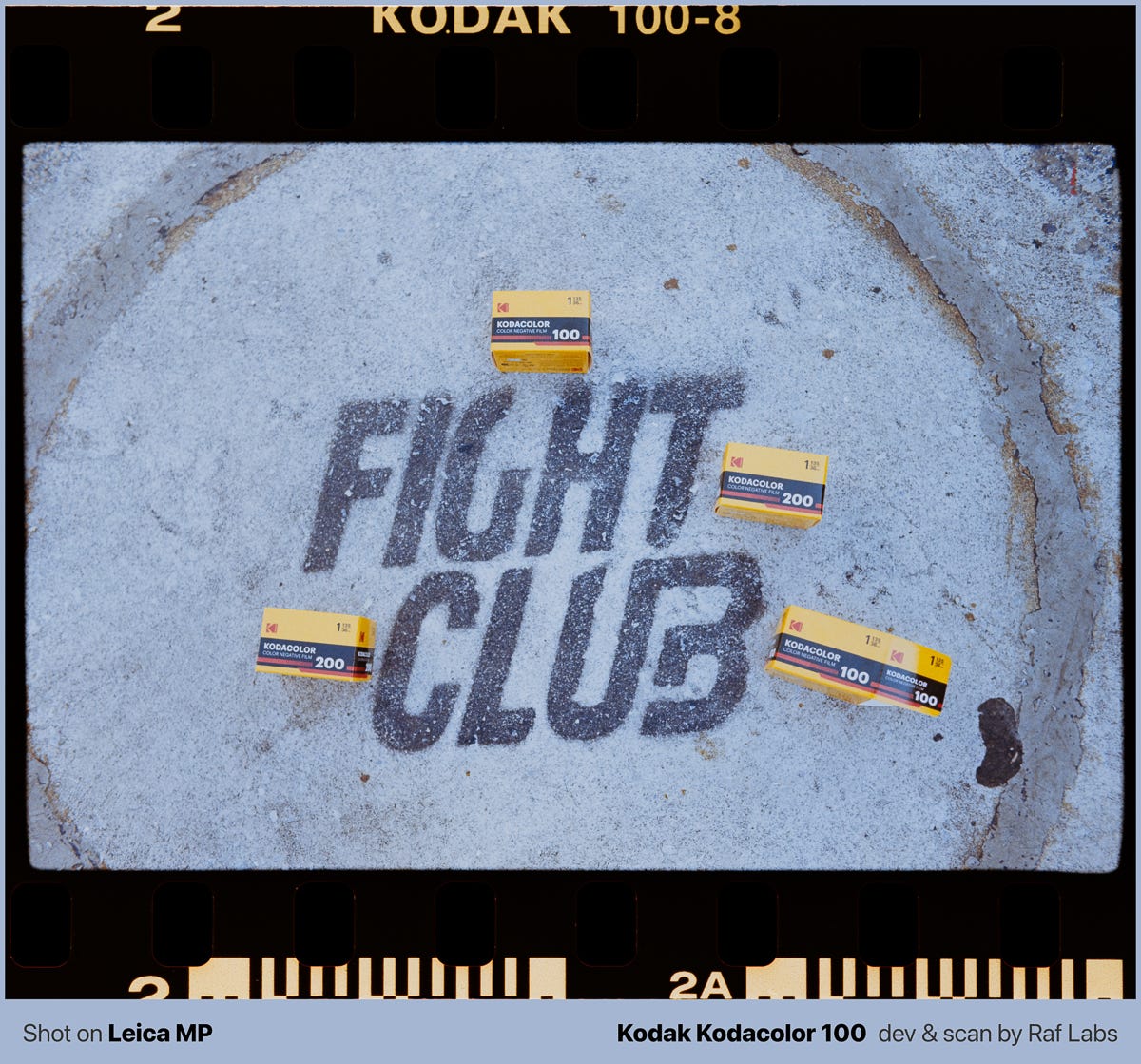
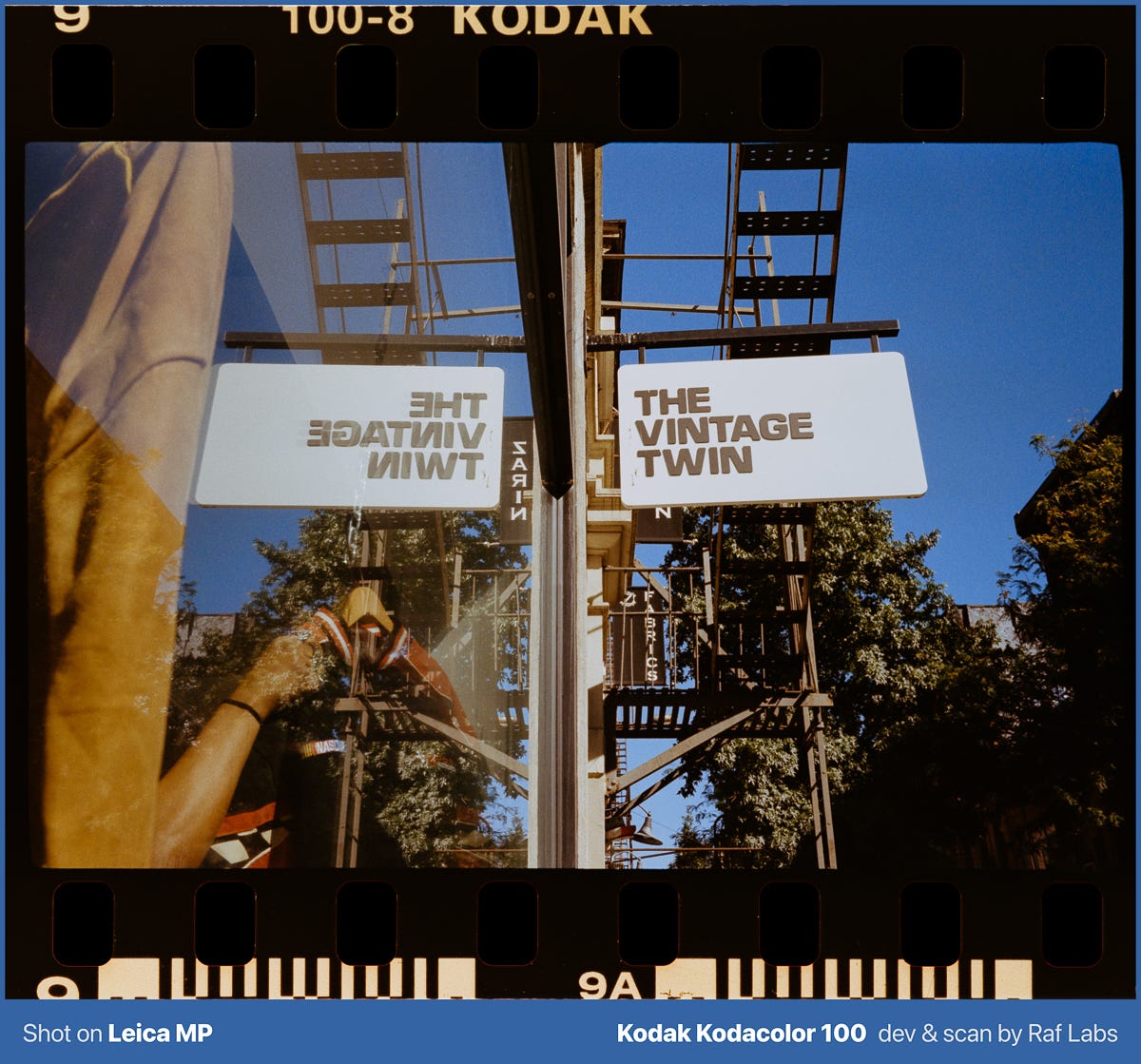
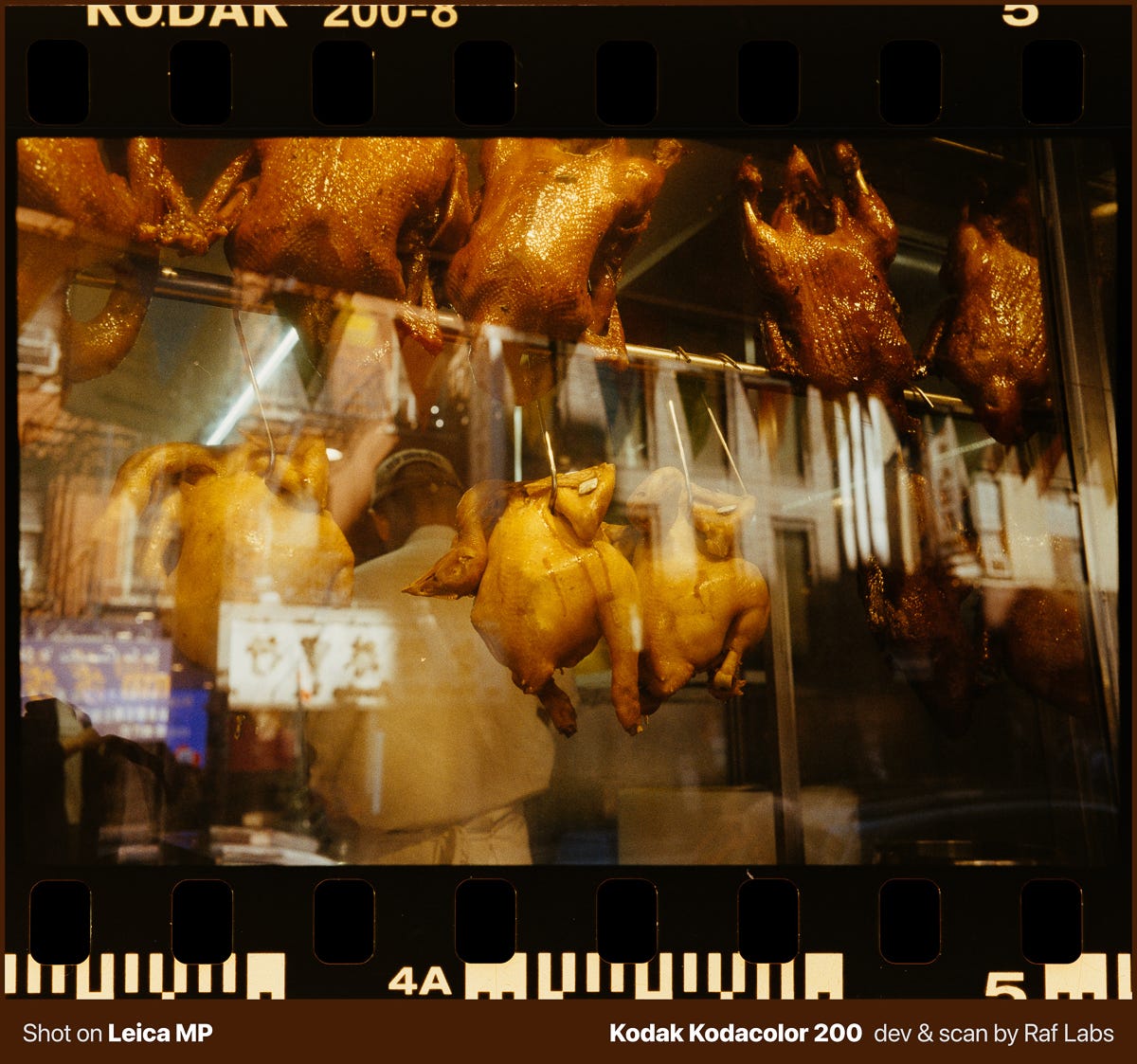
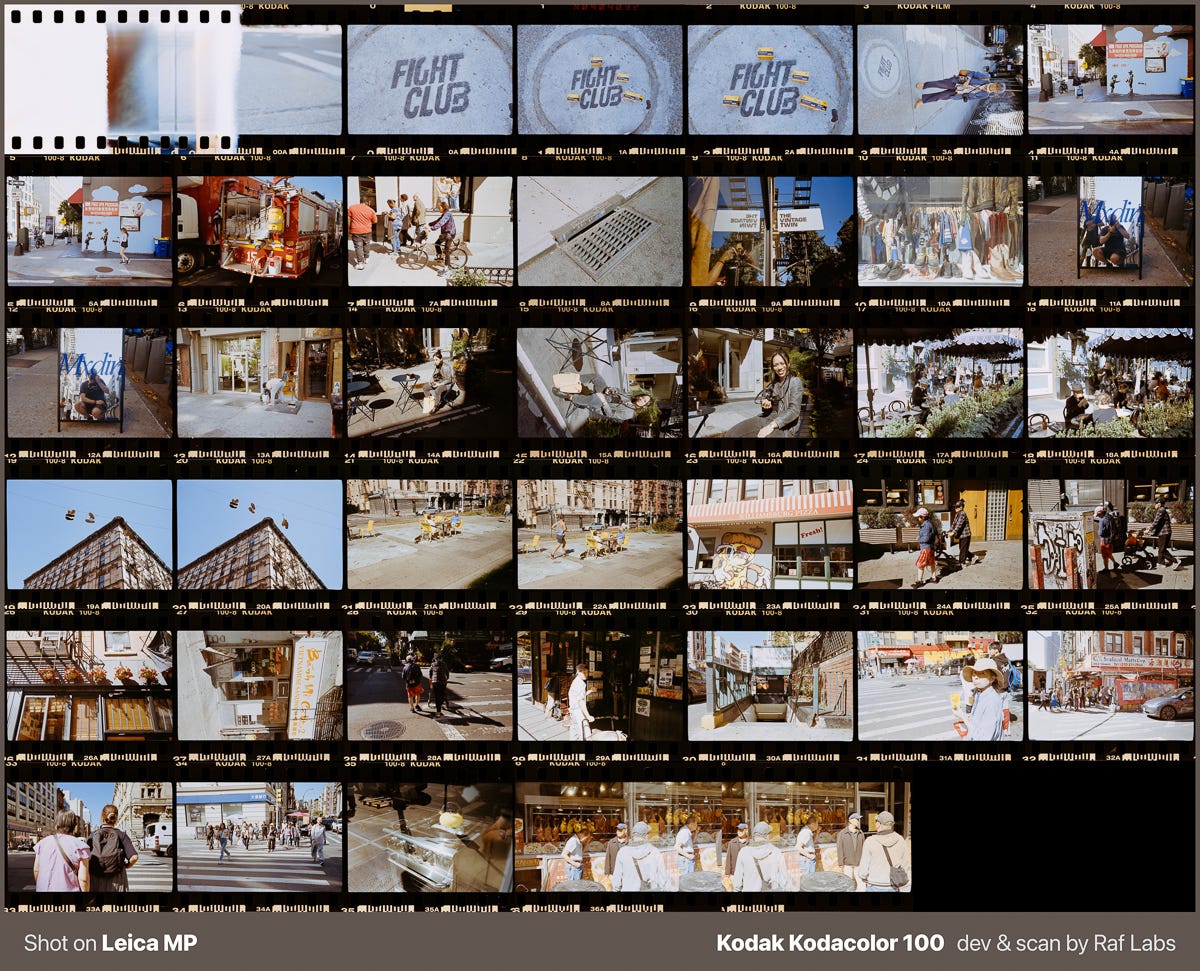
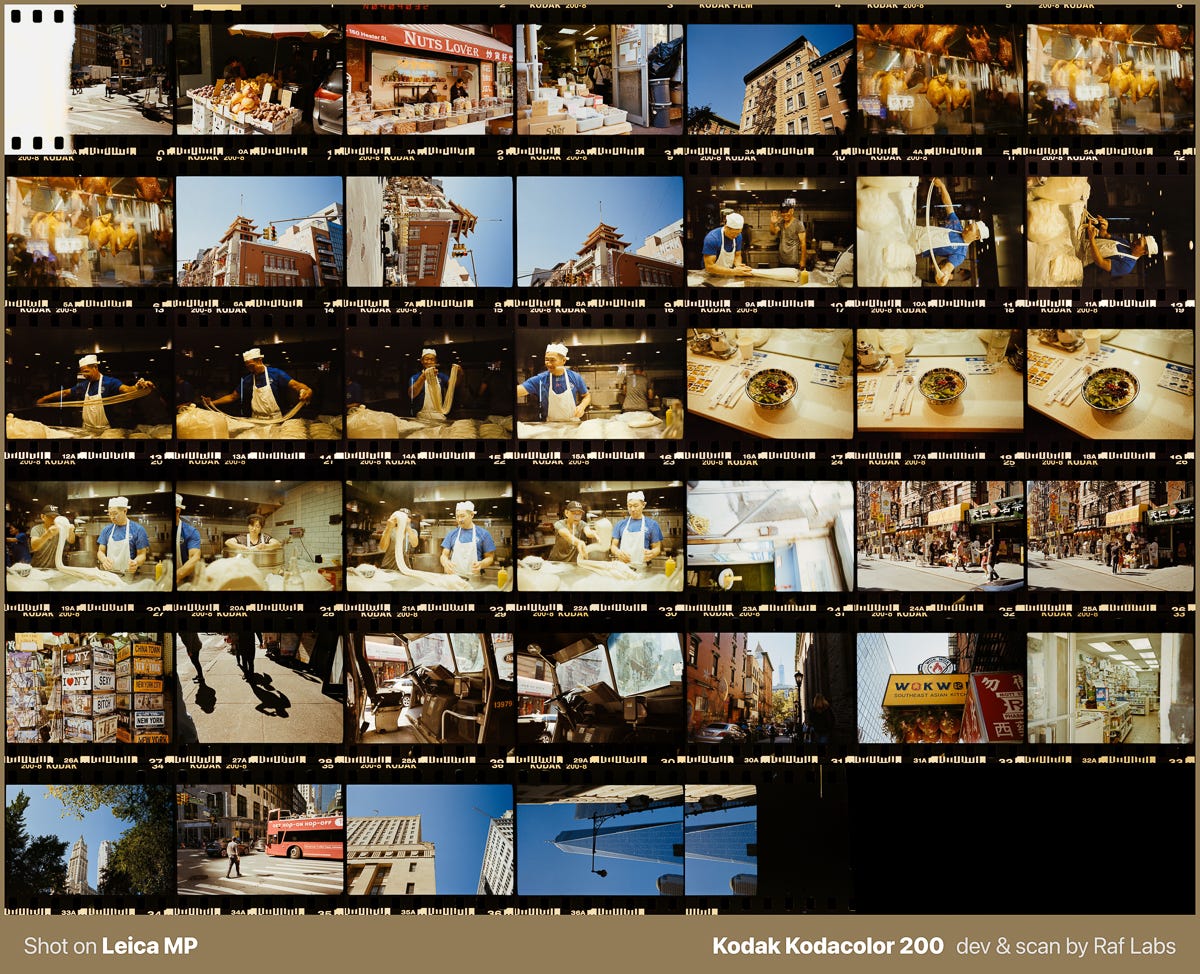

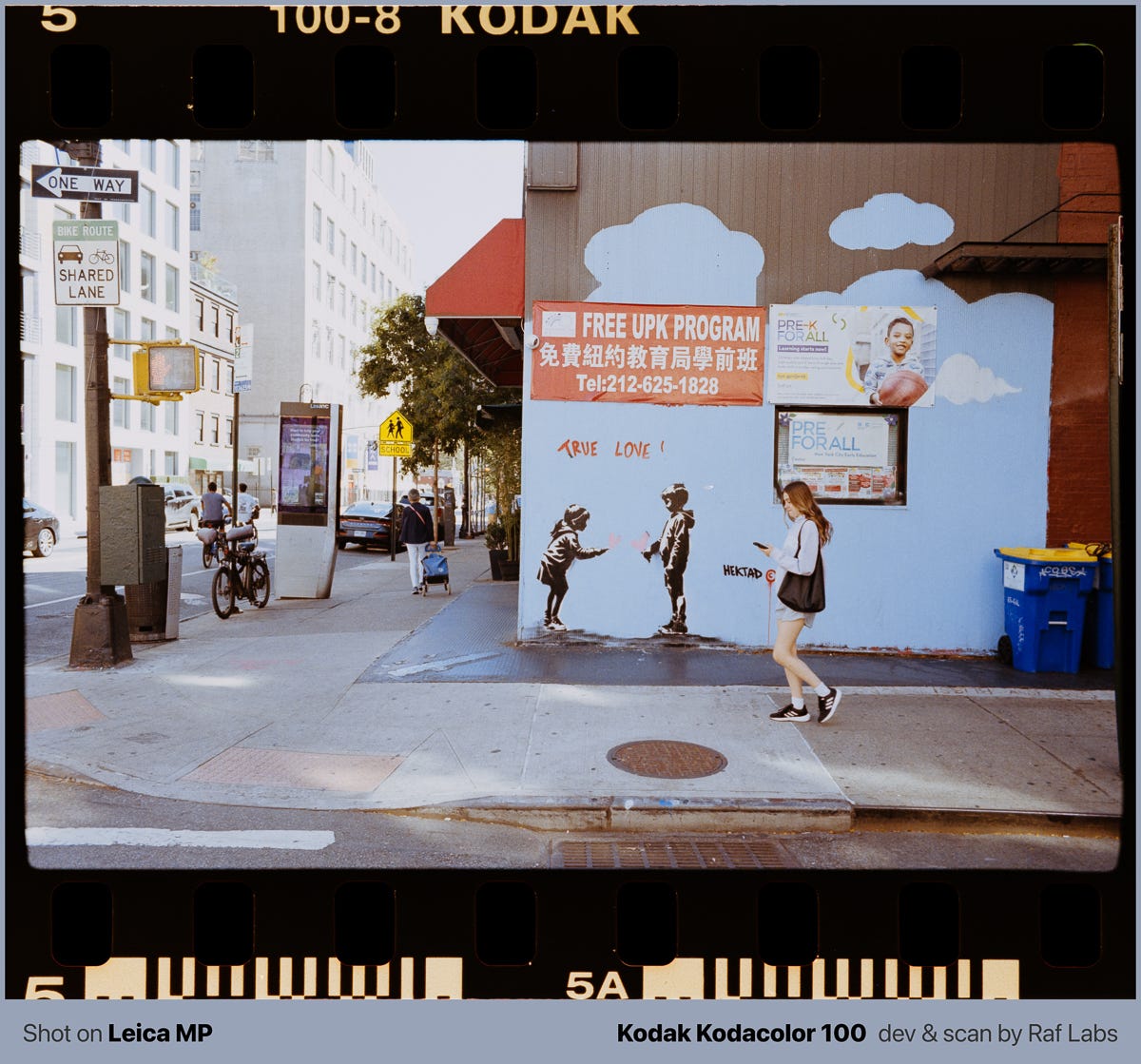
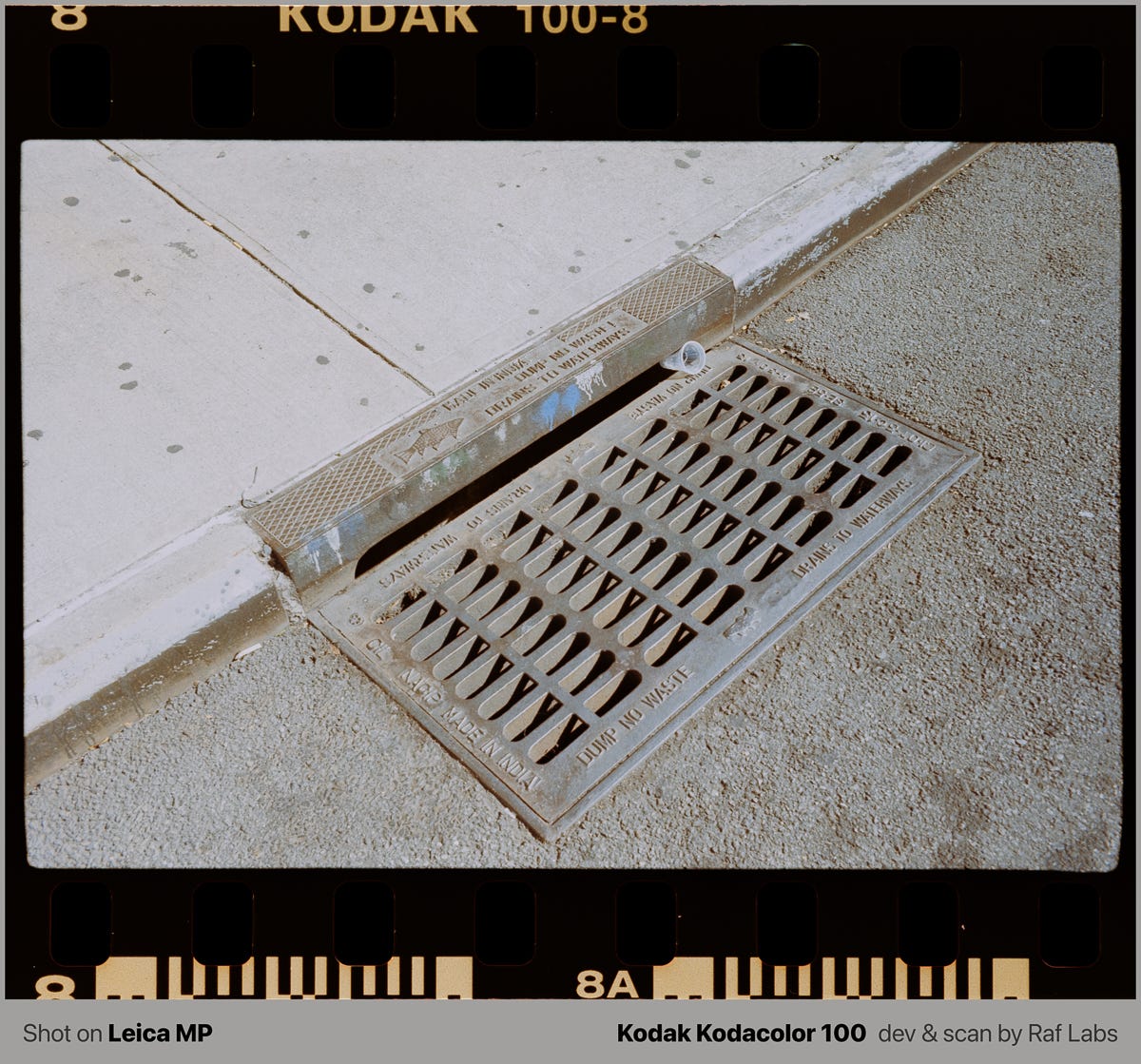
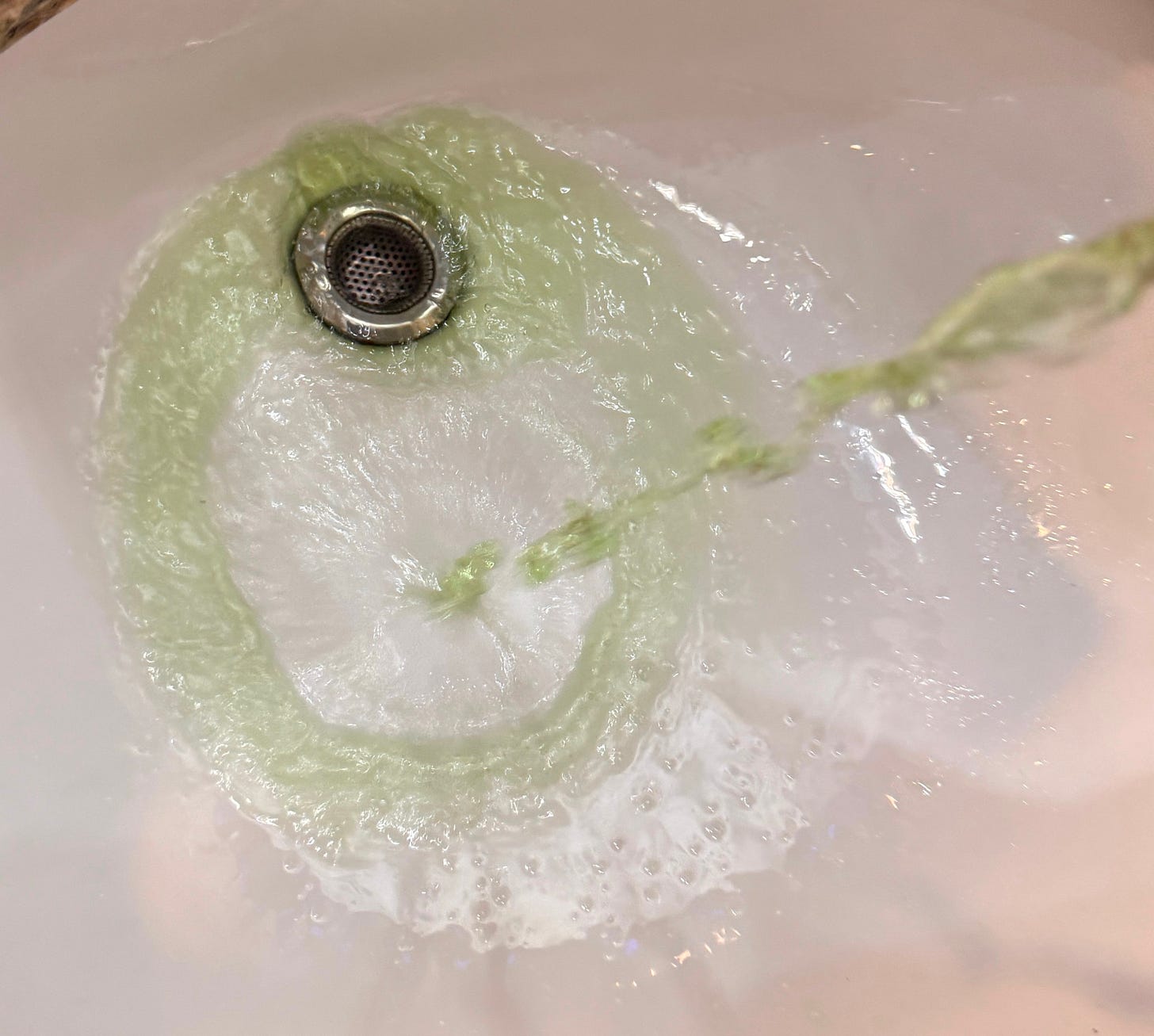
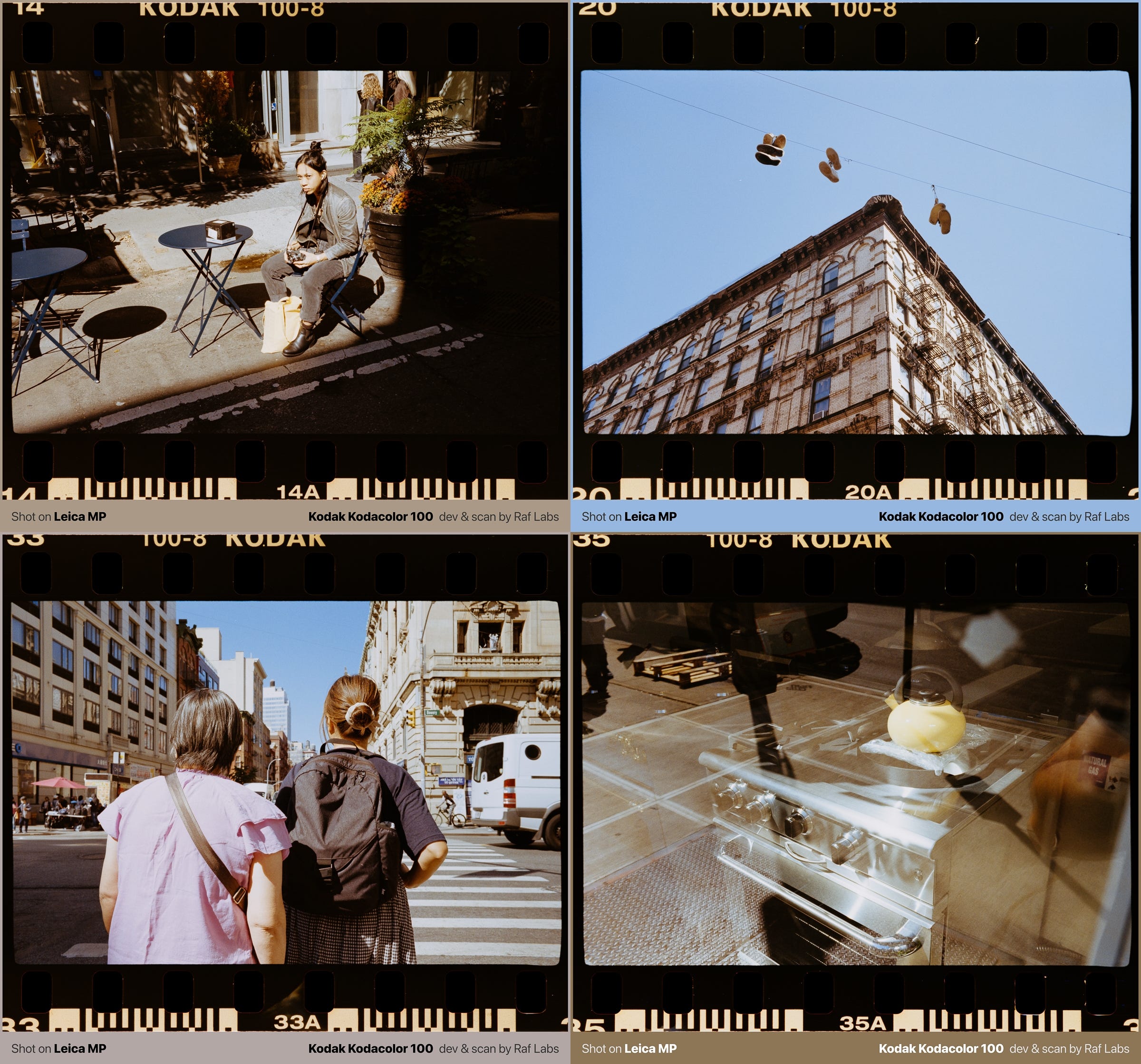
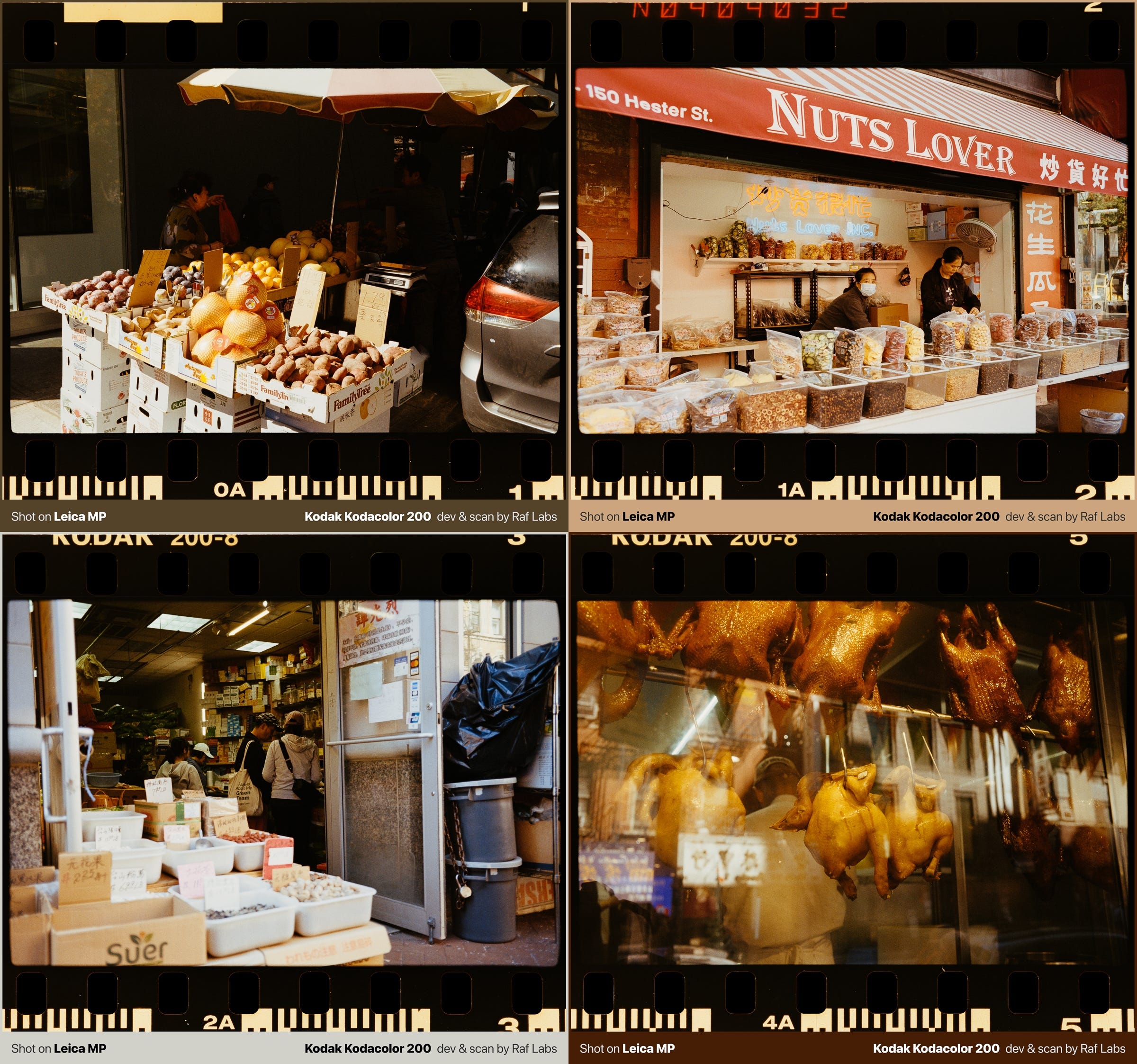
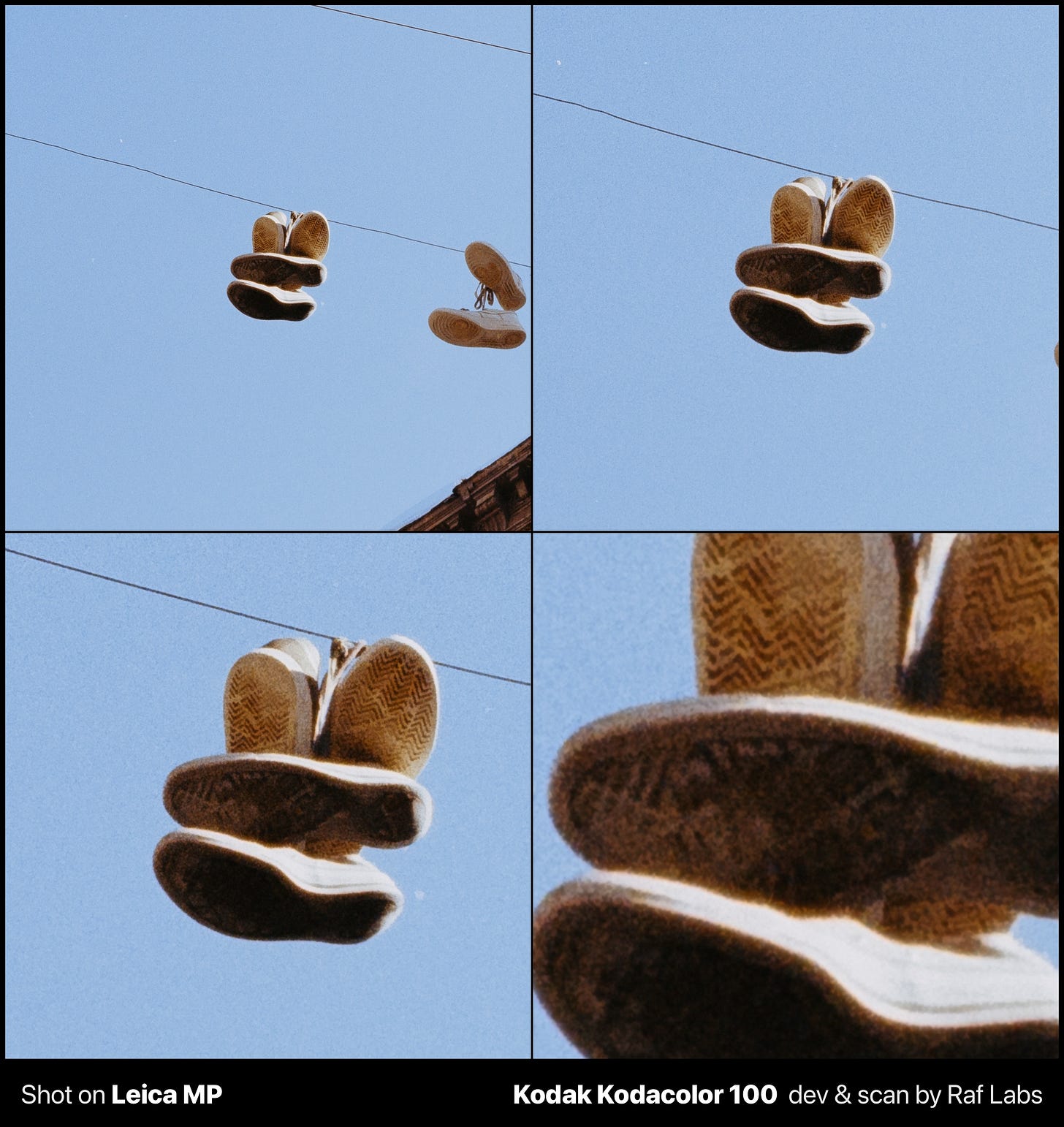
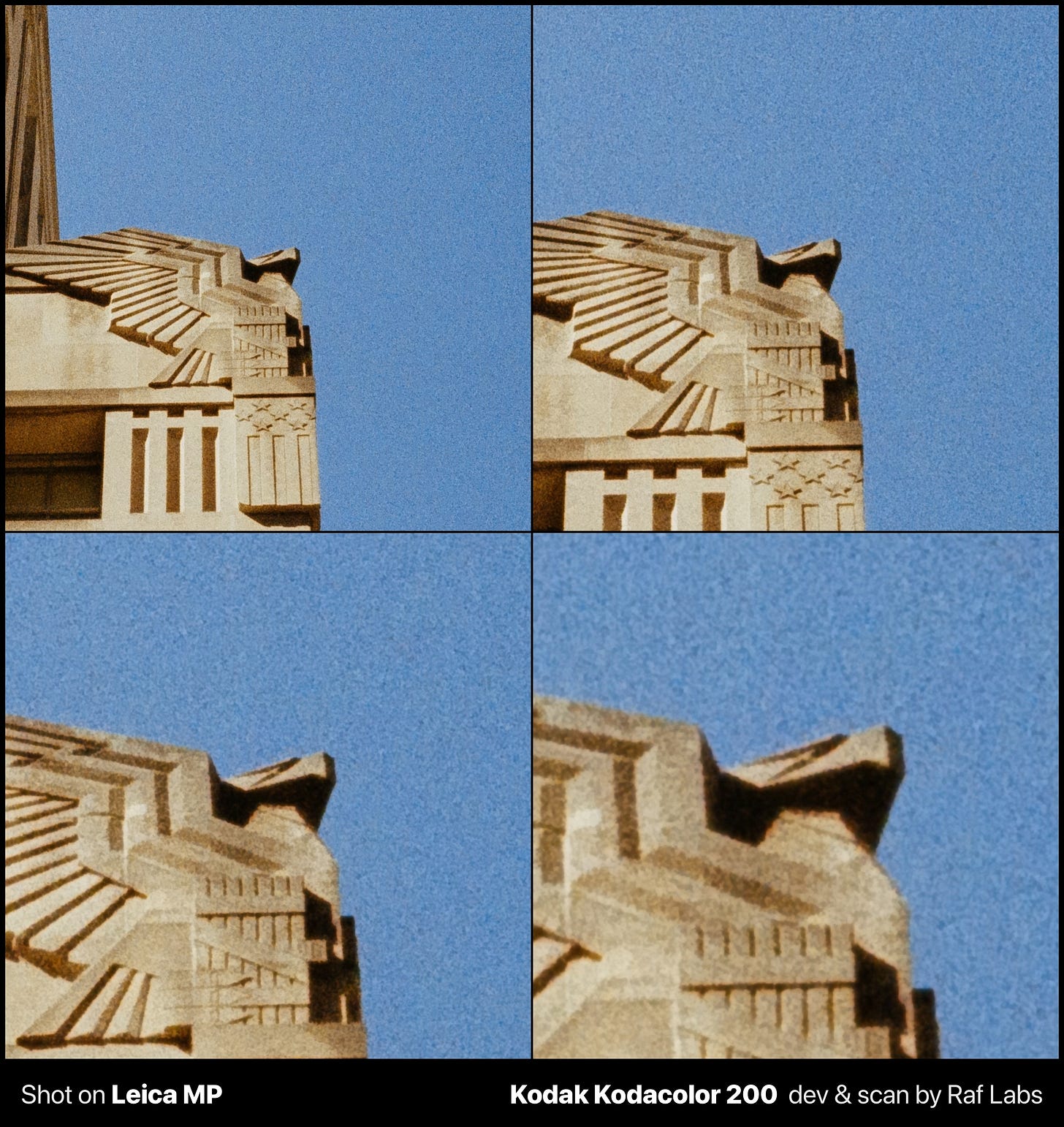
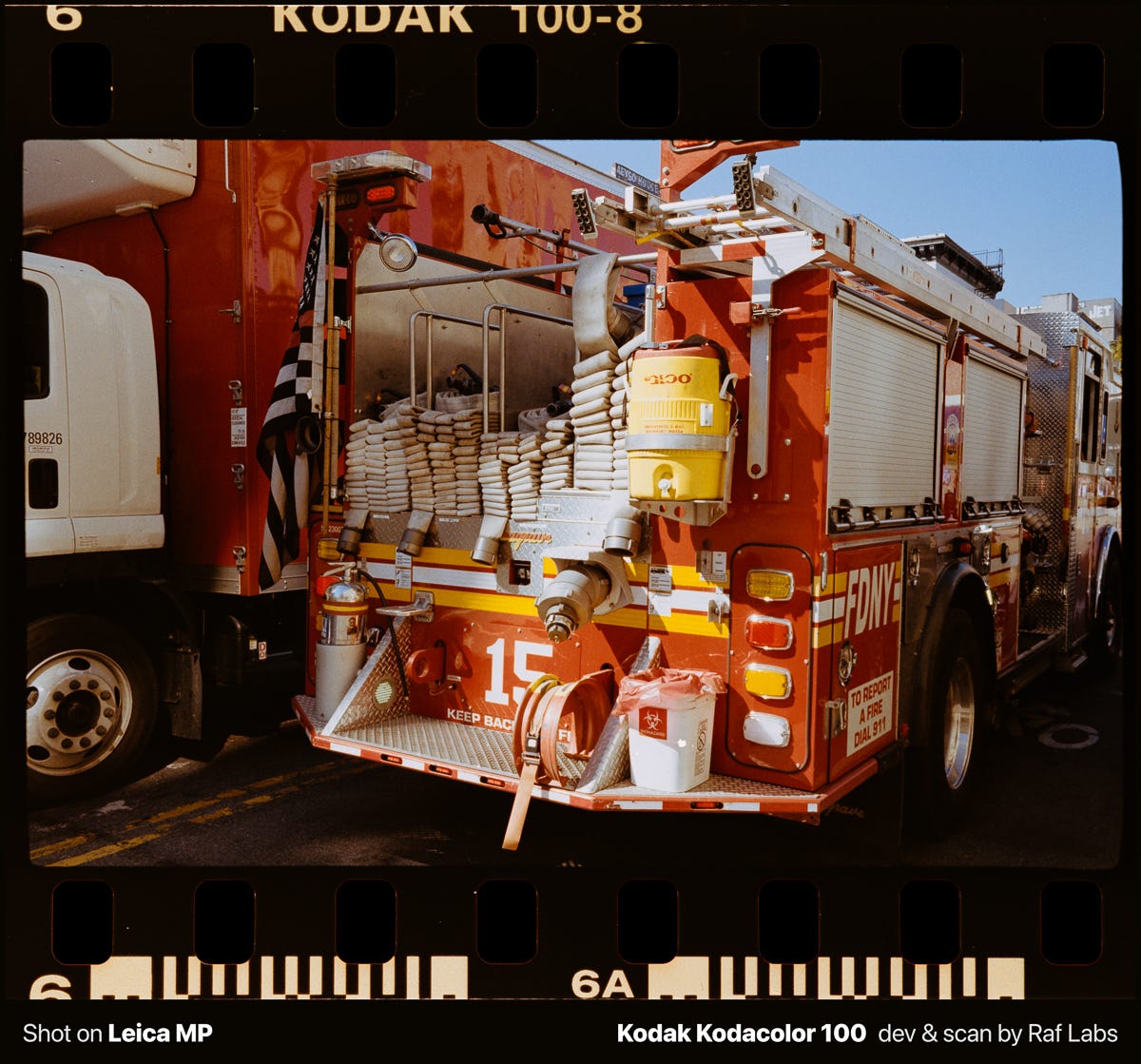
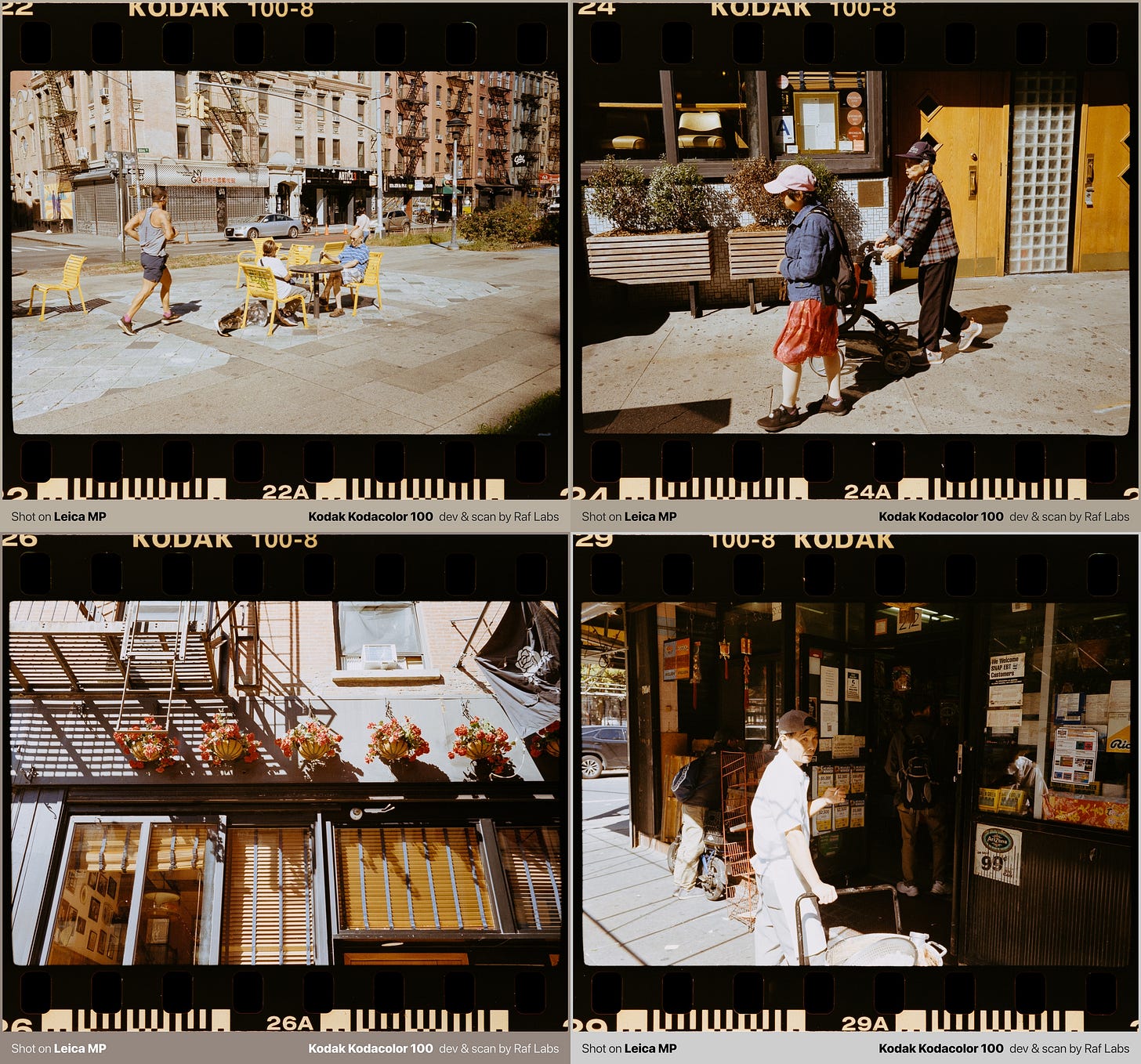
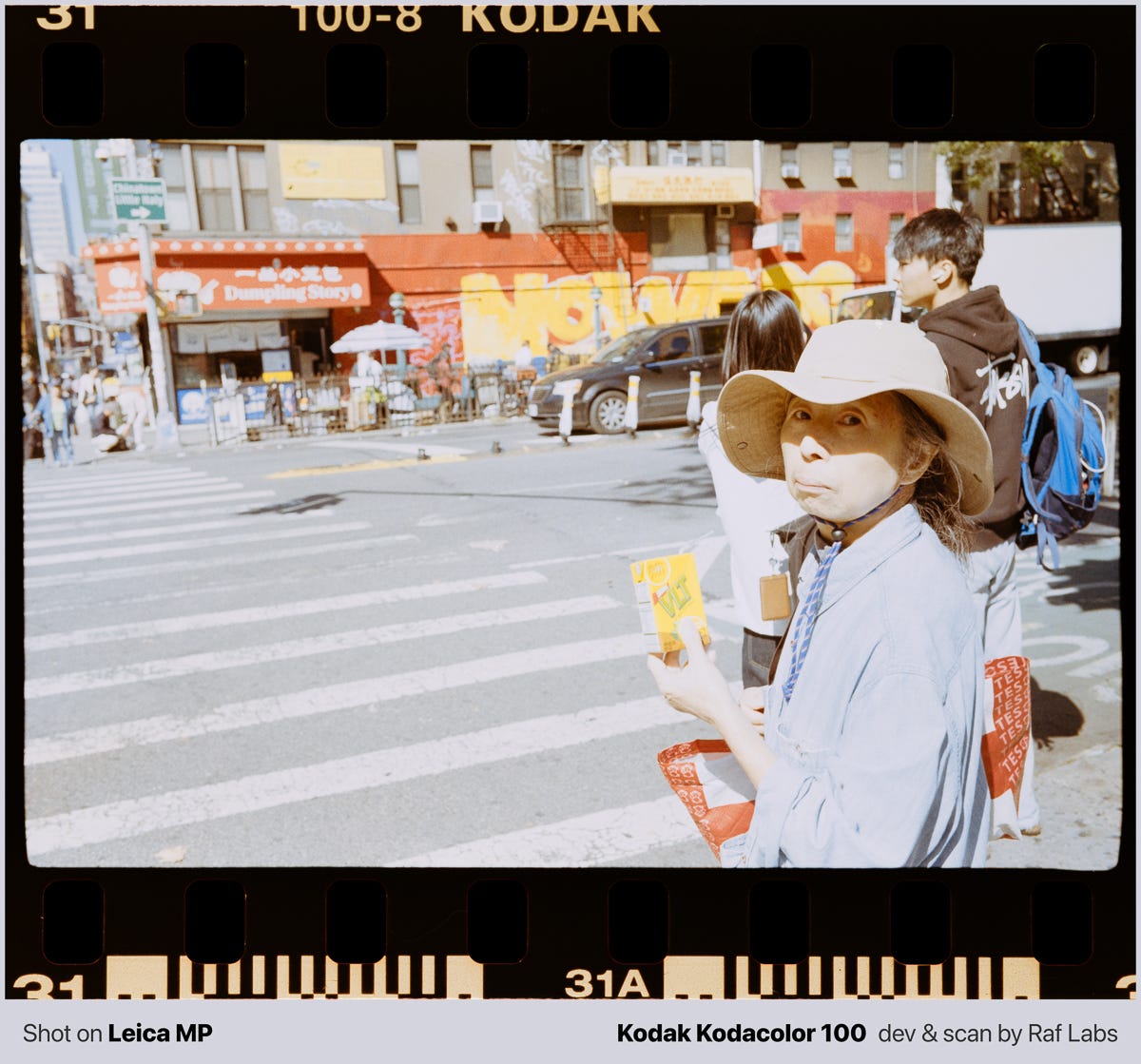
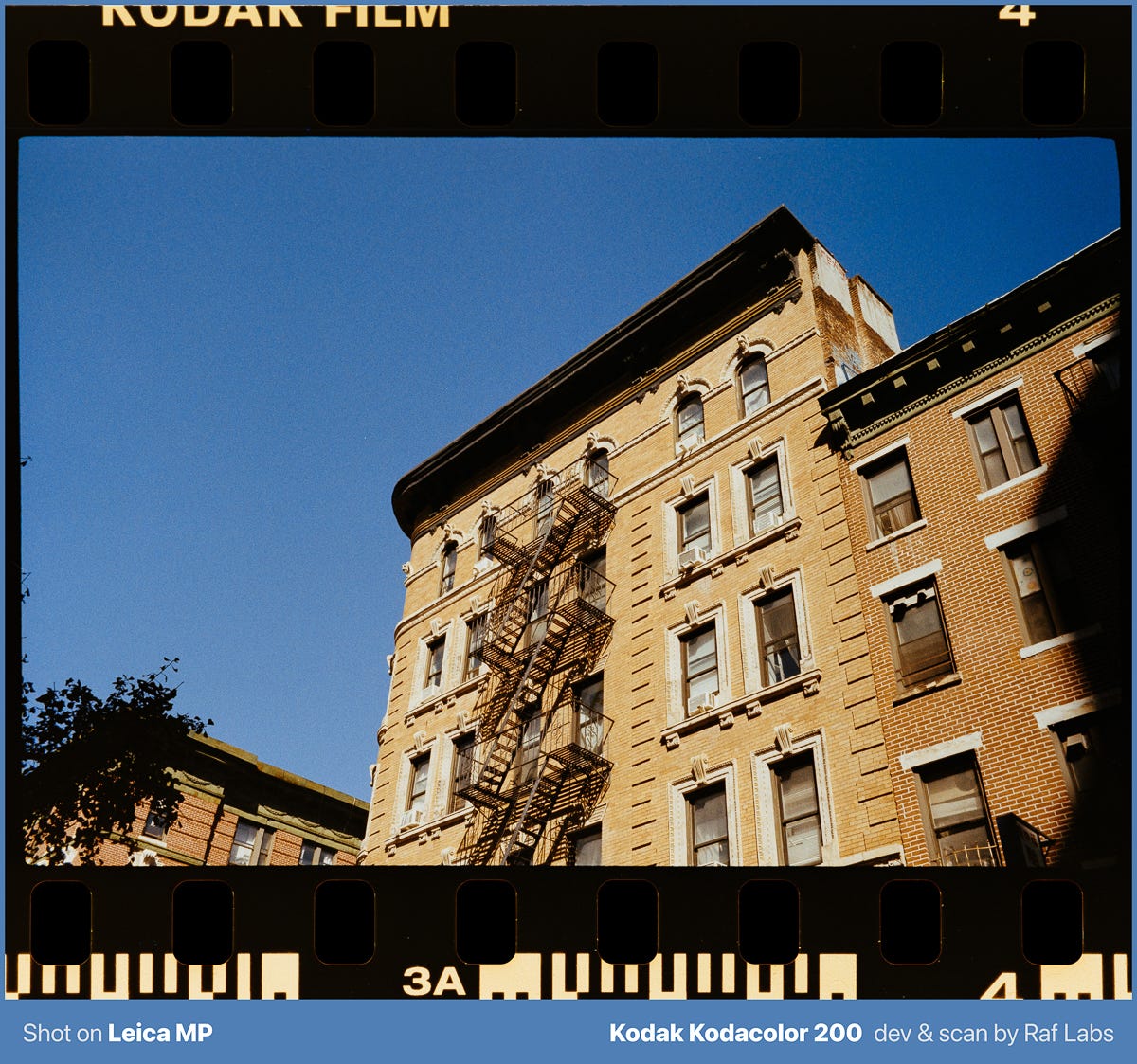
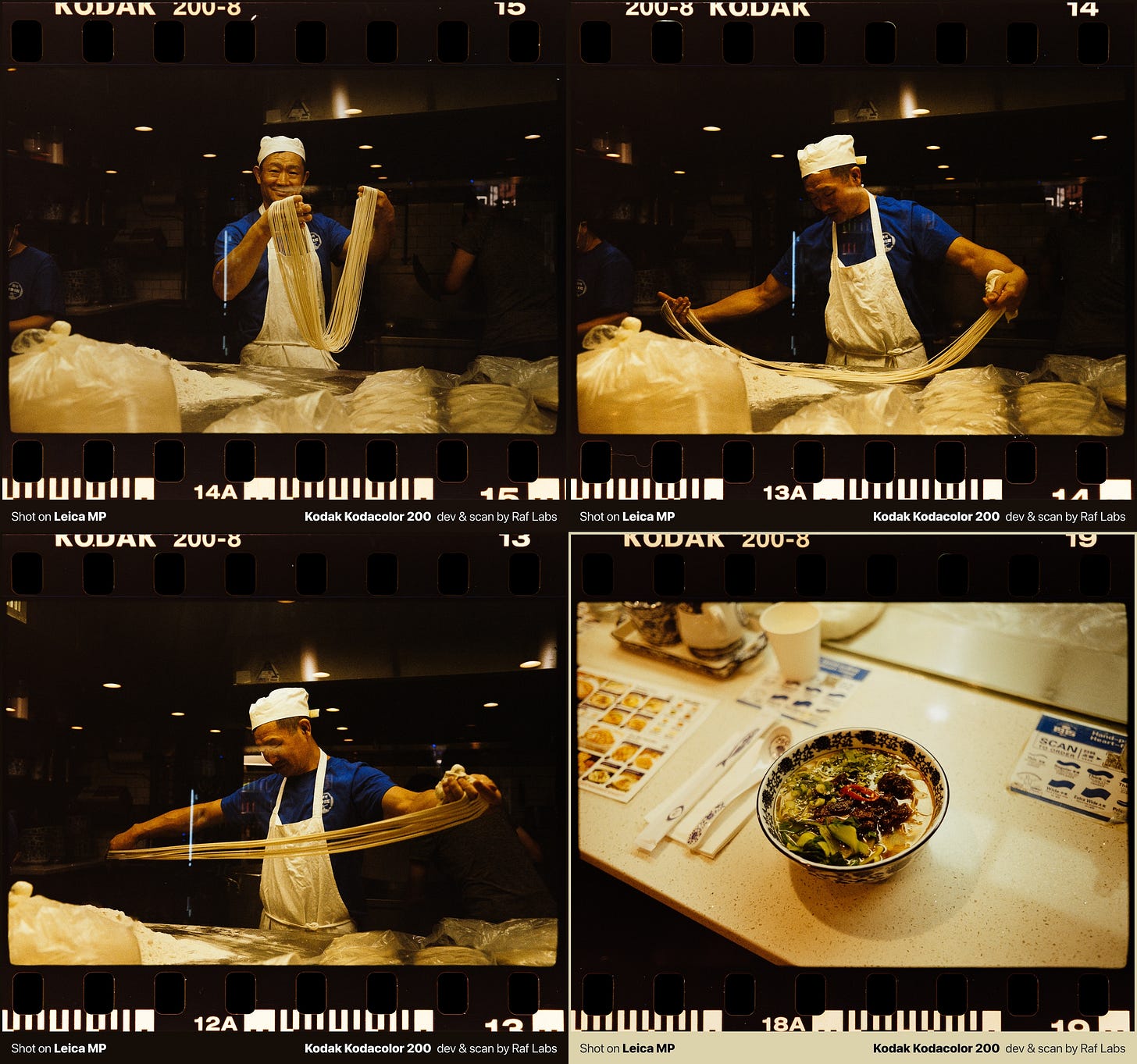
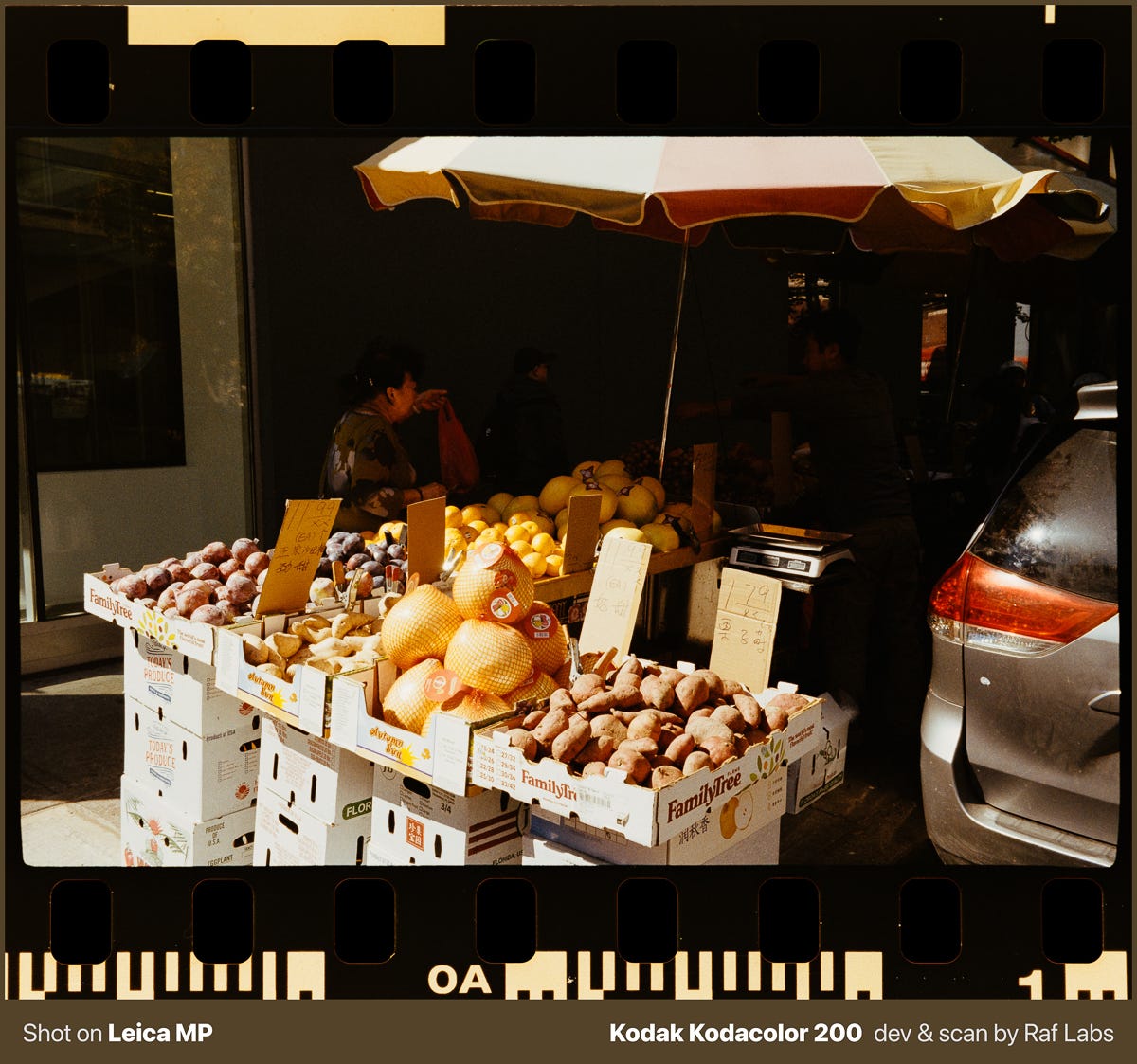
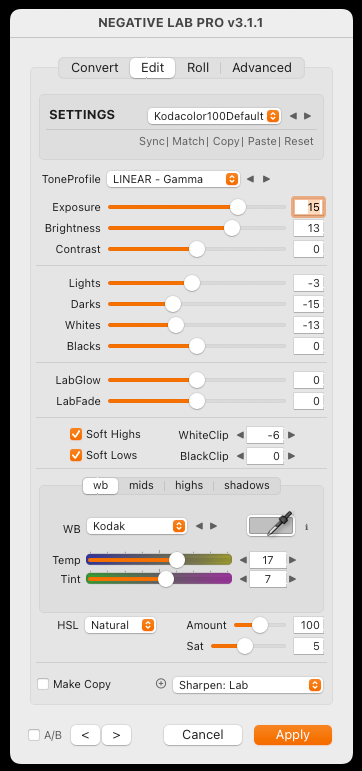
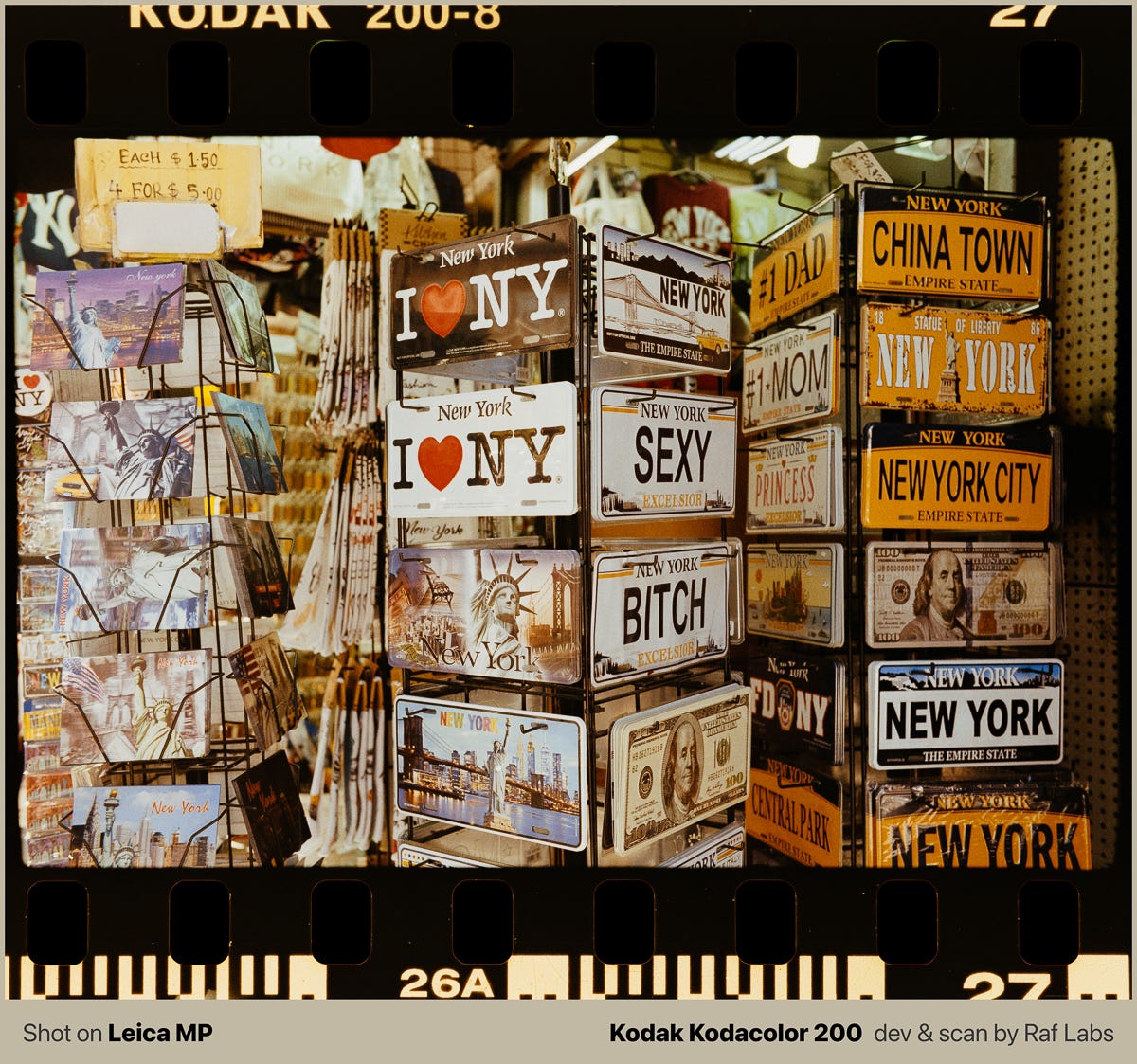
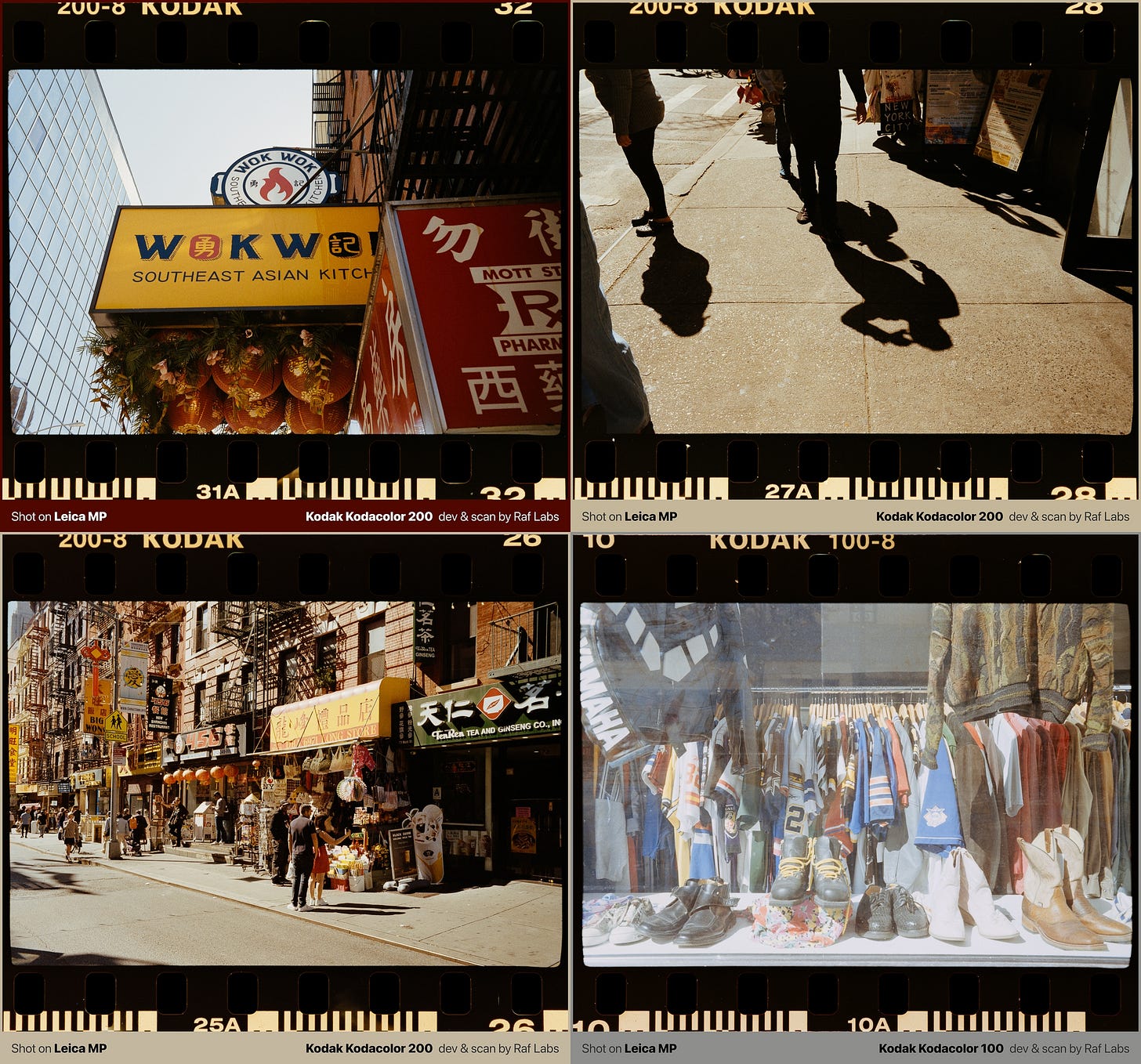
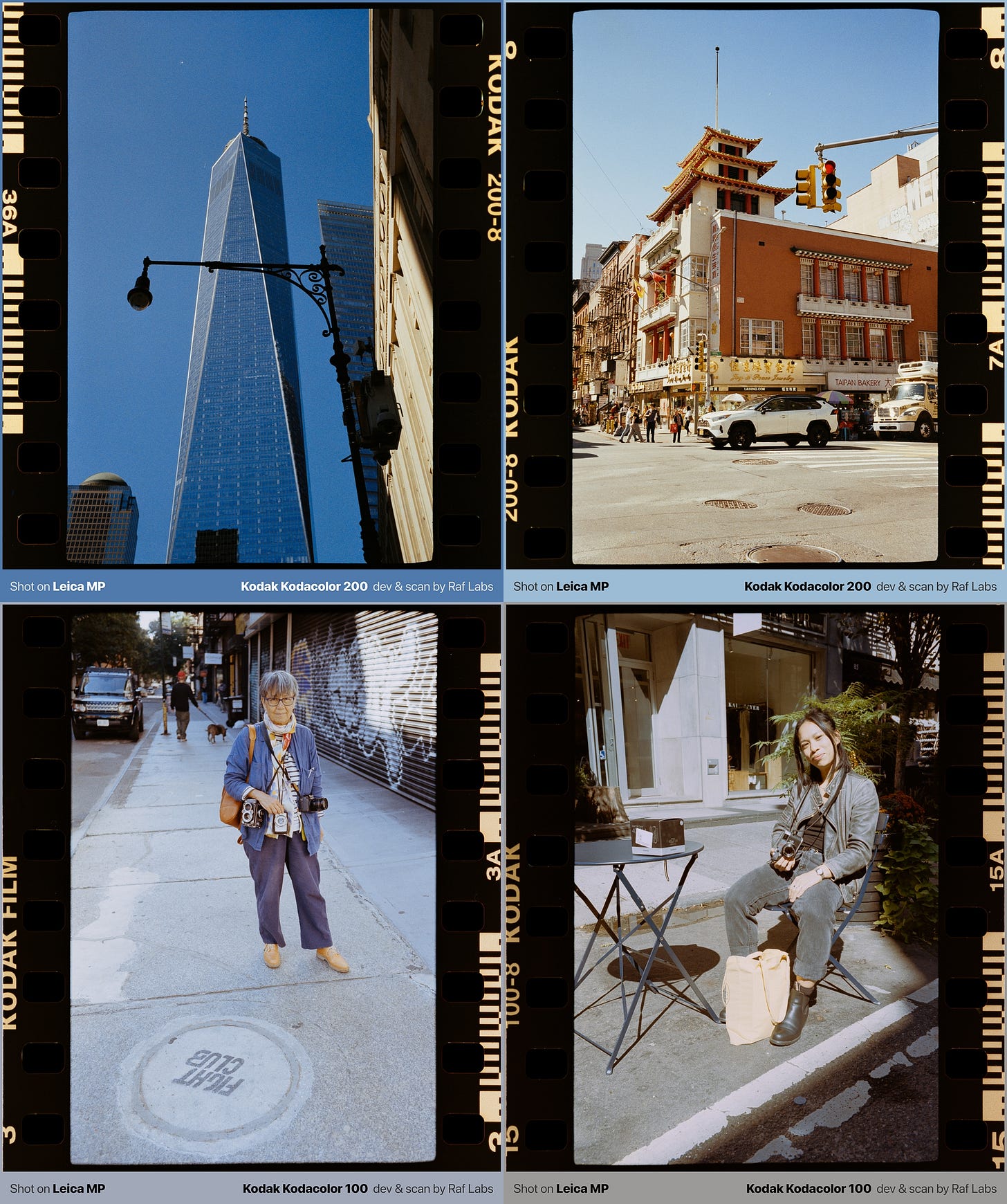
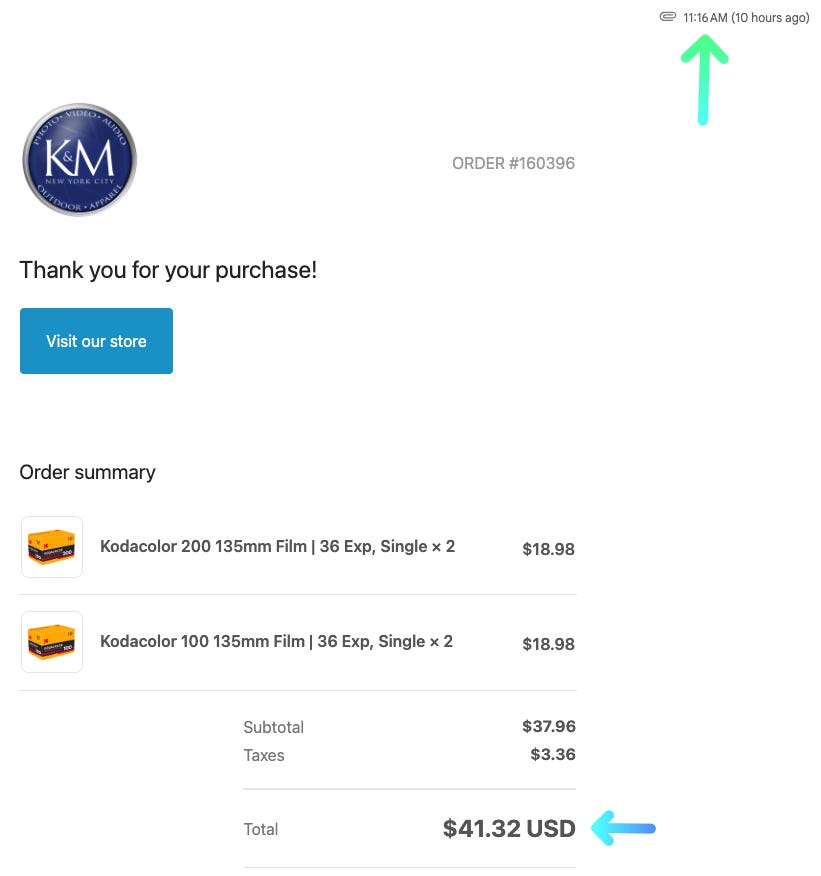

Such a thorough write up!
I feel like if this was a new emulsion Kodak would be shouting that from the rooftops. So, the real question, is it Pro Image 100 & ColorPlus or some version of their new AHU cinema films packaged for C-41 processing. Either way, it’s exciting that Kodak Eastman is putting out 35mm film directly.
Thank you for this awesome review! I’ve yet to try this film stock and I appreciate the detailed information.